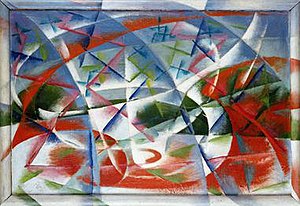The Futurist architect Antonio Sant'Elia expressed his ideas of modernity in his drawings for La Città Nuova (The New City) (1912–1914). This project was never built and Sant'Elia was killed in the First World War, but his ideas influenced later generations of architects and artists.The city was a backdrop onto which the dynamism of Futurist life is projected. The city had replaced the landscape as the setting for the exciting modern life. They wanted to see the bare bones, the structure behind things as part of the aesthetic quality. Sant'Elia aimed to create a city as an efficient, fast-paced machine. He manipulates light and shape to emphasize the sculptural quality of his projects. Baroque curves and encrustations had been stripped away to reveal the essential lines of forms unprecedented from their simplicity. In the new city, every aspect of life was to be rationalized and centralised into one great powerhouse of energy. The city was not meant to last, and each subsequent generation was expected to build their own city rather than inheriting the architecture of the past.
Futurist architects were sometimes at odds with the Fascist state's tendency towards Roman imperial-classical aesthetic patterns. Nevertheless, several Futurist buildings were built in the years 1920–1940, including public buildings such as railway stations, maritime resorts and post offices. Examples of Futurist buildings still in use today are Trento's railway station, built by Angiolo Mazzoni, and the Santa Maria Novella station in Florence. The Florence station was designed in 1932 by the Gruppo Toscano (Tuscan Group) of architects, which included Giovanni Michelucci and Italo Gamberini, with contributions by Mazzoni.



Hiç yorum yok:
Yorum Gönder